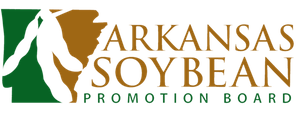Seed Treatments & Seeding Rates: Planting the Seed for Next Year
Dr. Jeremy Ross says that seed treatments could lead to success during the upcoming planting season. Ross, extension agronomist for soybeans at the University of Arkansas System Division of Agriculture, has spent the past several years testing seed for optimal planting time and yield.
In his experimentation, Ross alongside Trent Roberts, Ph.D. discovered a trend with late planting several years ago. Due to a delay in planting for a test, the researchers found that planting later than usual with the use of soybean inoculant led to increases in yield in comparison to planting untreated seed during the traditional planting time.
Late planting with inoculant also revealed the trend of a 1.3 bushel increase on the replicated large plots used in the test. Some fields saw a 6 to 7 bushel increase with the use of inoculants. Ross says that variability occurs in a large space so bushel increases are impacted by size among other factors.
When selecting inoculants, Ross contends that there is no distinct difference between products. All inoculants are living bacteria that should be used before the expiration date and stored away from heat to save the bacteria. Growers should also avoid using chlorinated water during the application process. Chlorinated water can kill the bacteria and negatively impact the effectiveness of the treatment.
Once seed is treated, growers should use compatible products for further treatments. Growers can access a list of recommended insecticide and fungicide seed treatments on a product’s website. Ross warns against incorporating molybdenum due to its incompatibility with most inoculants. The majority of soils in Arkansas already have an adequate molybdenum supply.
In addition to studying the use and effectiveness of inoculants, Ross also researched the correlation between treated seed, untreated seed and seeding rates. Ross conducted testing using seeding rates from 50,000 seed per acre up to 200,000 seed per acre. Ross concluded that less than 75,000 seed per acre saw an increase in seedlings. Lower seeding rates need a seeding treatment for success whereas any amount over 75,000 does not experience the same yield benefit. The benefits of seeding treatments may not occur for growers every year, but every 3 to 4 years is a reasonable expectation for yield increase according to Ross.
The importance of seed treatments in the upcoming planting cycle is high, given that seed quality has been projected to be down in 2019. The germination score is 10 to 15 points lower than what Ross prefers for success. The accelerated aging number is 57 percent on average, which is 15 to 25 percent lower than what Ross prefers for seed success.
Seed treatment cannot increase germination or accelerated aging numbers, but treatments can preserve the seed that growers have. Ross currently recommends that seed be planted any time after May 15 with compatible inoculants, insecticides and fungicides for optimal results.
To listen on the go, click here for the podcast version of this video as well as other helpful checkoff-funded research in audio format.
To learn more about the Arkansas Soybean Promotion Board's checkoff-funded research, watch the full Field to Film: Featured Research video series here.
